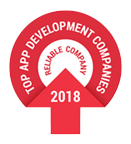IoT’s Role in Sustainable & Efficient Fuel Supply Chains

Not long ago, the Internet of Things (IoT) and its incredible power would’ve seemed like a ‘futuristic’ concept, but now, we’re living the reality. IoT has firmly established itself as the talk of the town. In just moments, this incredible technology has laid an impact so strong that it now spans diverse sectors. From revolutionizing fuel supply chains, and enhancing the efficiency of fast-moving consumer goods (FMCG) companies, to redefining operations in the oil and gas sector, IoT has proven to be a game-changer.
In this blog, we’ll look at some ways IoT shapes sustainability, efficiency, and progress in these vital domains. So, let’s explore the interconnected world of IoT and how it’s fueling a brighter, more sustainable future.
IoT: Its Transformative Impact Across Industries
The incredible piece of technology that we all know as the Internet of Things stands as no less than a marvel. It unifies disparate industries and revolutionizes the way they operate. IoT’s pervasive influence has transcended conventional boundaries, driving remarkable changes across every sector it touches.
From smart homes to intelligent factories, healthcare to agriculture, IoT has become the linchpin of innovation and efficiency. In fact, the Internet of Things is allowing professionals from supply chain management to stay on top of intelligent fuel supply chain practices. Let’s discuss this in detail.
Fuel Supply Chains: The IoT-Powered Components That Make It & The Unfurling Challenges
Fuel supply chains are like a web of endless networks. These networks, albeit often operating out of sight, are the unsung heroes of maintaining efficiency in fuel supply chains.
At the heart of these networks are IoT-powered components that have become the bedrock of fuel supply chains. Picture a world where fuel levels are monitored for results generated almost instantaneously, where predictive maintenance keeps dispensers humming smoothly, and where customers experience seamless service. Complex sensors, data analytics, and interconnected systems make this vision all the more possible. Truly with the Internet of Things in the mix, Fuel stations have become smart hubs of information exchange.
This confirms that the oil and gas sector has undoubtedly benefitted from the presence of IoT-based tech. Remote monitoring of infrastructure has become a reality, safety standards have been elevated, and supply chains are radically optimized for peak performance.
Speaking of industries, it seems like FMCG has also treaded in the direction of IoT adoption. This particular industry has finally realized that its success hinges on efficient fuel supply chains. With IoT-driven inventory management and logistics optimization, FMCG-first companies are sending out their products to the relevant consumers, faster and fresher.
Yet, amid this exciting transformation, challenges never cease to loom in the corner. Concerns about data security, interoperability, and the ethical use of data are always there. As industries navigate the IoT-powered future of fuel supply chains, they must have the ability to confront these challenges head-on.
How Does IoT Drive Sustainable and Efficient Fuel Supply Chains?
The real magic of the Internet of Things lies in its ability to deliver convenience out of a complex tapestry of sensors, devices, and data analytics. For supply chains, real-time monitoring of fuel levels avoids shortages, while predictive maintenance keeps machinery in peak condition, reducing downtime and waste.
IoT’s role extends beyond mere efficiency; it champions sustainability. By minimizing energy consumption and reducing carbon emissions through streamlined logistics and optimized routes, IoT ensures that the environmental footprint of fuel supply chains steadily diminishes. It’s a win-win for businesses seeking to embrace eco-conscious practices.
Thus, long story short, in this world of interconnected intelligence, fuel supply chains have found a lifeline in the Internet of Things, ensuring their survival and propelling them toward a future where sustainability and efficiency go hand in hand.
IoT in Fuel Supply Chains: The Matter of Now or Never
Incorporating IoT into fuel stations is not just a technological upgrade; it’s a strategic move to improve operations, reduce costs, and meet sustainability goals, ultimately benefiting both businesses and the environment.
There’s no doubt that the Internet of Things is revolutionizing the way fuel stations operate, through a multitude of benefits that enhance efficiency, customer experience, and overall sustainability. Let’s take a quick look at the benefits:
Real-Time Monitoring
IoT sensors continuously monitor fuel tank levels, enabling station operators to receive instant updates. This minimizes the risk of running out of fuel, resulting in improved service reliability.
Predictive Maintenance
IoT-powered equipment monitors the health of fuel dispensers and other machinery, yielding predictive data that indicate potential breakdowns, downtime instances, and maintenance costs for an unhindered workflow.
Enhanced Customer Experience
IoT-connected systems provide customers with personalized services, such as tailored promotions and loyalty programs through mobile apps. This fosters customer loyalty and satisfaction.
Inventory Management
Fuel stations can optimize inventory levels with data-driven insights, ensuring efficient stock management and minimizing losses due to overstocking or understocking.
Energy Efficiency
IoT enables better control of lighting, HVAC, and other energy-consuming systems, reducing energy consumption and cost savings.
Environmental Impact
IoT helps fuel stations minimize environmental impact by optimizing fuel delivery routes, reducing fuel wastage, and monitoring emissions.
Security
IoT-based surveillance systems enhance security, deterring theft and vandalism, and ensure staff and customers’ safety.
What Other Precincts Can Benefit from IoT?
Oil & Gas
IoT has sparked a revolution across industries, notably in oil and gas, by ushering in real-time data analytics, remote monitoring, and predictive maintenance. It has transformed traditionally manual processes into efficient, automated operations, leading to increased productivity, cost savings, and improved decision-making capabilities, setting new standards for modern industry practices.
The Highlights
Remote Monitoring of Oil and Gas Infrastructure
IoT sensors on critical infrastructure like pipelines and drilling equipment provide real-time data. This enables remote monitoring, reducing the need for manual inspections, enhancing safety, and allowing immediate response to anomalies, preventing accidents, and optimizing operations.
Safety and Compliance Improvements with IoT
IoT ensures continuous monitoring of safety parameters, such as gas leaks and equipment integrity. It enables compliance with stringent industry regulations, reducing the risk of incidents, fines, and reputation damage. IoT empowers proactive safety measures and regulatory adherence.
Supply Chain Optimization in the Oil and Gas Industry
IoT streamlines the oil and gas supply chain by tracking the movement of resources, equipment, and products. It optimizes logistics, minimizes delays, and reduces waste. The power of IoT lies in its ability to deliver real-time visibility and data-driven decision-making, ensuring efficient operations.
FMCG
For FMCG industries, IoT has led to significant improvement in supply chain visibility, ensuring just-in-time inventory management, and enhancing product quality. This interconnected approach also extends to the fuel supply chain, as efficient logistics and timely fuel deliveries play a crucial role in ensuring the swift movement of FMCG products to consumers.
The Highlights
IoT-Driven Inventory Management
IoT enables real-time tracking of inventory levels, reducing overstocking and stockouts. Sensors provide data on product quantities, allowing companies to make informed decisions, minimize waste, and meet consumer demand efficiently.
Streamlining Logistics and Distribution with IoT
The Internet of Things optimizes logistics by providing real-time data on shipment locations, conditions, and traffic. This allows FMCG companies to make route adjustments, reduce delivery times, and enhance overall distribution efficiency, ensuring products reach consumers promptly and in optimal condition.
IoT For Sustainable & Efficient Supply Chains
Conclusion
Incorporating IoT-led practices has been paramount across industries because they pave the way for a new era of efficiency, innovation, and competitiveness. The Internet of Things empowers real-time data collection and analysis, enabling smarter decision-making and predictive capabilities. It enhances operational transparency, reducing downtime and minimizing costly errors.
So, to recap it all, for intelligent fuel supply chain management, the Internet of Things paves the way for sustainability by optimizing resource utilization and reducing environmental impact. This particular technology isn’t just a mere upgrade; it’s a strategic imperative that fuels growth, reduces costs, and positions organizations to thrive in an increasingly interconnected and data-driven world.















